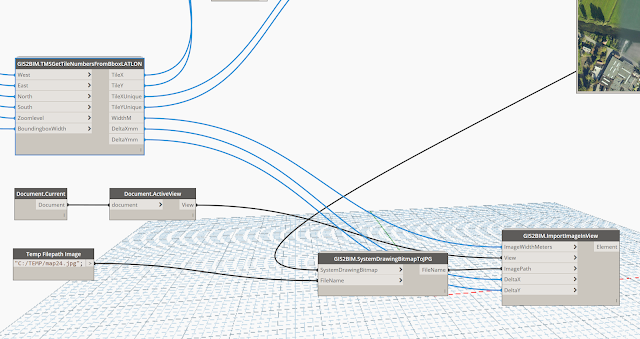
Which tiles? Map tiles are organized in a pyramid indexed by (x, y, zoom) indices where the top contains a single tile that covers the entire world, the next level contains 2 x 2 tiles, n-th level contains 2^zoom x 2^zoom tiles etc. In order to access the elevation data, we need to fetch Terrain-RGB tiles from the server. Distance between points should be regular so that we get a nice and smooth elevation profile but it should not be smaller than Terrain-RGB pixel size. Later, we will retrieve elevation for each point. Without sampling, the elevation profile would be just a line connecting two elevations. Why is this necessary? Imagine that the user draws a line with only two definition points (red dots). In the next step, we need to generate a set of points along the line.

By the path, we mean a linestring with several definition points. We will use mapbox-gl-js library along with mapbox-gl-draw plugin which allows us to do it. The first thing we need to do is to create a simple web app with a map and add the ability to draw paths. The application we are going to build is a web application that allows us to draw a path and retrieve elevation profiles along that pathīefore we dive into the code, it is beneficial to understand the process of retrieving elevation from Terrain-RGB tiles. This article attempts to offer guidance and outline steps that need to be taken in order to get an elevation profile from the Terrain-RGB tileset. It is possible indeed! However, it is not straightforward and one can get sidetracked by many GIS-related challenges.
#MAPTILER TMS HOW TO#
You might have wondered if it is possible to access the elevation values and how to get the elevation profile in an HTML/javascript application. For example name="service.The MapTiler Terrain-RGB tileset contains elevations encoded in a simple png image format as RGB values. Now create a new XML file on the webserver with a pointer to the 'TileMapResource.xml' file. Open the 'TileMapResource.xml' file in this directory and edit the contents: Now copy the generated tileset to your webserver of choice (IIS, Apache or others) to a directory 'ShadedRelief'. In the next screen, uncheck OpenLayers and GoogleEarth. In the first screen, select option 'WGS84', because the sample image has this spatial reference. Īt the moment (January 2011), the latest release is 1.0 beta2. The MapTile GUI application can be downloaded here. With MapTiler GUI application we can now generate tiles. If we open the image in a picture viewer, we see a nice map: The spatial reference of the image is specified in the Read_me.txt file: WGS84 If you use your own image, make sure to have a world file for the image. The world file (tfw) is an important file, it contains the coordinates of the image.
#MAPTILER TMS ZIP FILE#
The download is a zip file containing the files 'HYP_50M_SR_W.tfw', 'HYP_50M_SR_W.tif' and 'Read_me.txt'. Hypsography + Shaded relief + Oceans + Antarctic Ice Shelves (39.3 MB) Take as a start an image thats not very big, for example

In this example we download a georeferenced image from the Shaded Relief website. Note 2: In this example upcoming ArcBruTile 0.3 and MapTiler 1.0 beta 2 is used.įirst we need some data to serve.

The whole process can be more complicated in some cases and in-depth knowledge of image formats, projections and TMS services is needed. Note 1: This description just contains a basic sample. It's a 4 step process: Get data, generate tiles, configure ArcBruTile and view the tiles in ArcMap. This document describes the process to get from image to viewing in ArcMap. Those tiles can be viewed in ArcMap using ArcBruTile (or with any decent TMS client). MapTiler is a tool that generates tiles from georeferenced images.


 0 kommentar(er)
0 kommentar(er)
